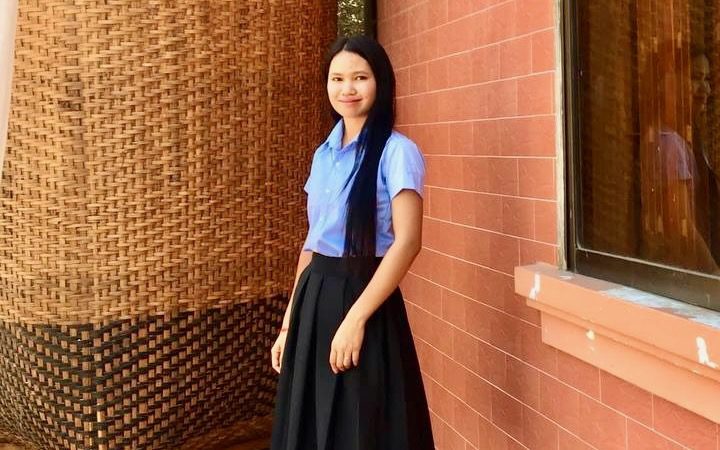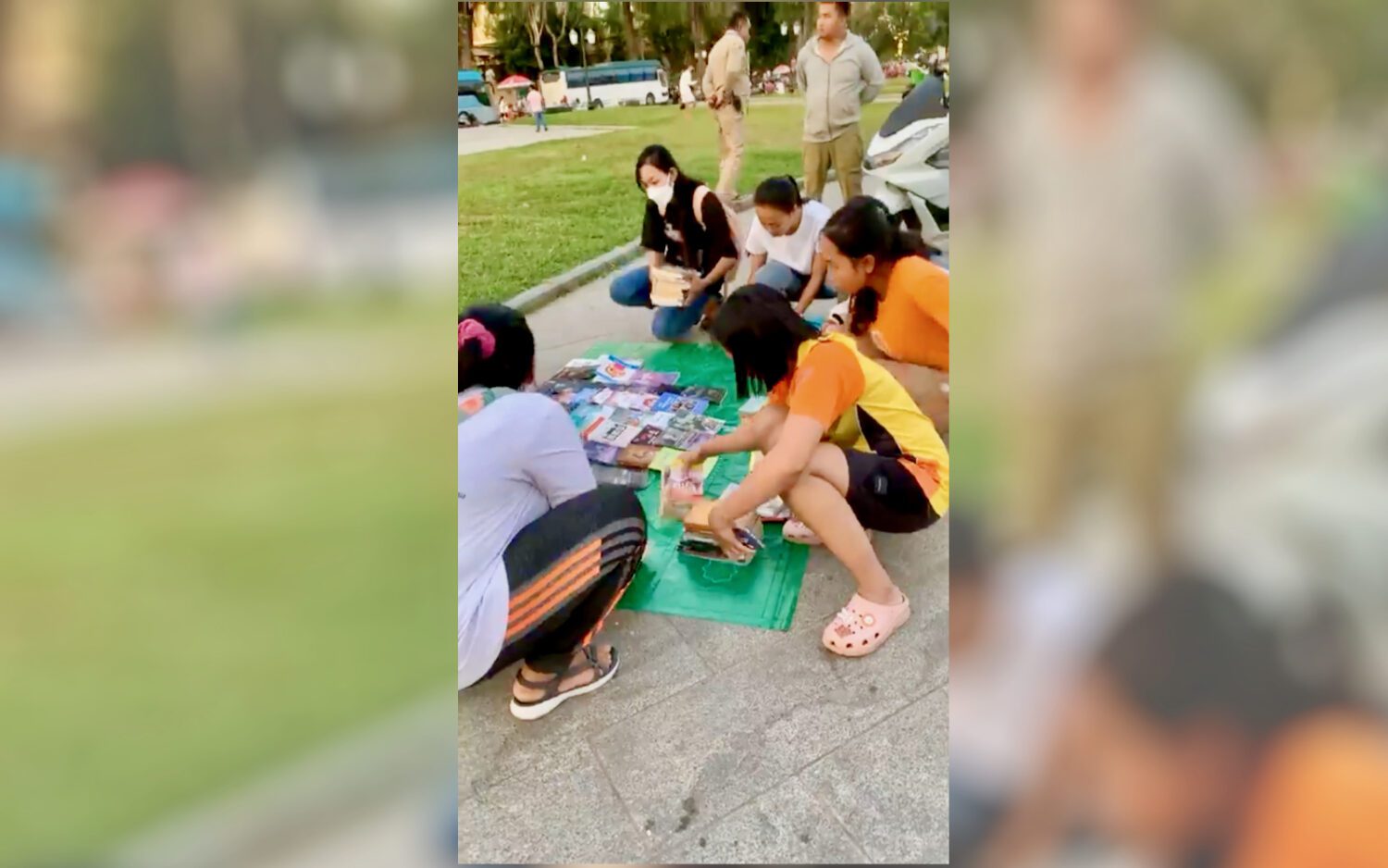Back in high school in Ratanakiri’s Kon Mom district, Nann Mara, an indigenous Kreung student, sat in a classroom dominated by Khmer peers. She was untalkative and wouldn’t ask questions. Whenever there was a group assignment, she couldn’t find other students to partner with.
“Don’t be in her group, she is indigenous, she knows nothing,” Mara recalls classmates saying.
“They said, ‘You are a woman, and indigenous, you don’t need to study — you will end up working on a farm all the same.’”
Mara kept quiet without responding, just bowing down her face and walking away. Sometimes, she went to the bathroom and cried alone.
It’s a common predicament retold by many students who grew up in Cambodia’s indigenous communities. Stereotypes of being backward remain strong among the Khmer majority around them, and small words can hit hard, weighing on students for years or a lifetime. And often, pressures to hold back ambitions also come from within the indigenous communities themselves.
But Mara is now at university studying law: just the third person from the indigenous communities in Kon Mom district to seek a higher education. Less than 1% of all indigenous people aged 15 and over have even completed high school, according to a recent government study.
Protecting their traditions, standing proud in a hostile milieu, breaking cultural expectations in order to pursue dreams, wanting to bring progress to their communities — the burdens the students juggle are many and conflicting.
And yet Mara — and others like her — are finding their way through such difficult waters with growing numbers, confidence and camaraderie.
Between Worlds
Mara wanted to quit school many times. But her father, a former primary school teacher, told her to keep her head down and keep going. As an educator, her father cared more about his children’s education than most parents in her community, Mara says.
School dropout rates are high among indigenous youth. According to a report issued last year by the government, as of 2013 almost 66% of the indigenous population aged 15 and over had not finished primary school. About 10% had some secondary education, and less than 1% had a high school diploma. The statistics were worse for girls and women than for their male counterparts, the study adds.
For Mara, once she made it through high school, she spent a year volunteering with the Cambodian Indigenous People’s Organization, an NGO, helping it advocate for communities on land and forestry issues. The experience was key in giving Mara the determination to pursue a career in law in order to further the work, she says.
Soon she was headed to the Royal University of Law and Economics in Phnom Penh. At first she remained quiet and largely overlooked by her peers and lecturers, who mistook her reticence for ignorance. But schoolwork was never the problem, she says.
Mara still felt nervous about discrimination, and initially she didn’t tell people in Phnom Penh about her indigenous background. But she was just as lost at home. Whenever she went back home to Ratanakiri, people mocked “the educated girl in the city,” she says.
“They thought I was proud,” Mara says. “They looked at [my] face like a stranger.”
A turning point came when she joined a program early in her time at university where she could meet other young women from minority groups, including from the Cham Muslim community and Cambodia’s ethnic Vietnamese minority.
“I still had some hesitation in mind about showing my identity, worried that some people would still discriminate against me,” she says. But she quickly found common ground with the other participants, talking about the different forms of discrimination they had faced. She got to know the diversity of cultures in Cambodia. “After joining the program, I dared to reveal myself.”
Common Ground
Recent research says many young indigenous women are proud of their cultural identities but fear discrimination. Some 92.5% of indigenous girls and women who participated in a survey by Women Peace Makers, published in April, said they had faced discrimination. The reason was often language or religion.
Nearly half of the participants said they had very little to no relationship with people from other groups. Most commonly, it was because they didn’t have much chance to go outside their communities, but they also felt shy or were afraid of discrimination, the participants said.
They spoke of “a gap in support for the very prevalent issue of self-confidence among Indigenous girls,” the study says. “They felt uncomfortable due to lack of self-confidence, afraid of being made fun of, thinking their voices would not be heard or valued.”
The many difficulties faced by indigenous girls have become barriers against going to school at all levels of education, the study says.
Fong Champey, vice president of the Cambodian Indigenous Women’s Working Group, a network formed in 2018, says a lot of the pressure can come from within communities.
“Some indigenous communities, there is a tradition that does not value girls getting an education or going far away from home. They have the perception that girls who leave home are not proper women, or if they go out they will be at risk,” Champey says.
Nevertheless, a growing number of young women are overcoming the obstacles to take their education further.
Kong Thit, a Bunong university student from Mondulkiri’s Koh Nhek district, is the only one of her seven siblings to leave her hometown and move to Phnom Penh to pursue a higher education.
“If in the future I become a writer, I would like to write in the language of our indigenous people so that there will be more writing and speaking and a book that will make them more recognizable,” Thit says. “At first I would write in Khmer. I know that when it comes to the language of the indigenous people, currently we rarely see writing, only oral communication. I’ve decided to write in Khmer to better understand, and then find a way to write in our indigenous language.”
Panhu Lai, a Kreung student from Ratanakiri’s O’Chum district, is studying computer programming at Phnom Penh’s Preah Sihanouk Raja University. She says she hopes to help indigenous communities access digital tools and knowledge without hindrance.
Bridging Worlds
Mara, the law student, says that leaving home does not mean turning her back on her community or its traditions. She believes that by getting a broader education, indigenous students can help protect their communities, whether by representing people in legal matters or recording and sharing their lives through publishing books.
“Coming to study in Phnom Penh, we live far away from our culture, but we also helped to promote it,” Mara says. “We should live with our culture while evolving with the changes.”
She acknowledges that the reaction can still be mixed — “some people admire us, some people say why do you come here” — but once she began to show pride in her background, Mara found that people around her were more welcoming.
“When they asked me where I was from, I told them I was from Ratanakiri, that I am indigenous, but they didn’t discriminate. They were happy to know me. … They wanted to know more about us,” she says. “It makes me feel happy and proud that I was born [in an] indigenous [community].”
Discovering confidence turned the discrimination on its head. Mara says some of it became points of pride.
“Actually, what they say is true: We are indigenous; we work and cultivate fruits and vegetables in the forest.”
But that is not a thing to be ashamed of or to look down on, she says, nor any reason to be denied the right to pursue an education or any other freedom.













